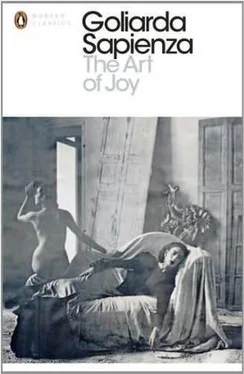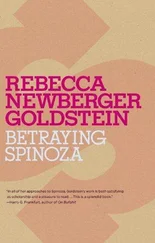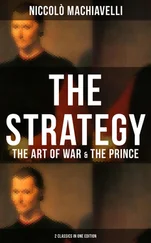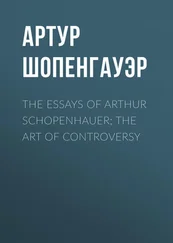The proof was that, once I regained control of myself, simply by holding that tangible, hot cup in my hands, I noticed a tender, compassionate smile I’d never seen before hovering on Joyce’s lips, now serious again. As if that new smile weren’t enough, she added:
‘Forgive me, Modesta, but since I’ve known you an indiscreet curiosity has made me want to ask you something. It’s all Jose’s fault, given his total inability to grasp the real core of a person, a country, an object. Everything becomes abstract when Jose tells it. To give you an example: you ask him about a given individual who’s impressed him, what her hair is like, the colour of her eyes, and he says: “How should I know! I’m not interested in those useless details. I told you that she’s beautiful and intelligent. Isn’t that enough? Always looking for gossip!” And that’s how he spoke of you. He only told me about your strength, your intelligence. And I was expecting a woman if not old, very mature, and not a young girl. Forgive me, Modesta, but how old are you?’
I felt ashamed. It was clear by now: everything I’d said and done had been gauche. I heard my voice — or was it Carlo’s voice? — uncertain and confused:
‘I was born on the first of January, 1900. With me it’s easy to figure it out, like the nun in the convent kept saying.’
It was so easy that Joyce, wide-eyed with surprise as though seeing a dwarf or the Bearded Lady, exclaimed:
‘No, Modesta! Go on, you’re kidding! I’m glad, because if you’re joking it means you feel all right. But you can’t be thirty-three years old.’
My shame vanished. I wasn’t Carlo, who never got angry and always put up with being teased about how absurd it was to be twenty-eight and look nineteen at the most. No, I wasn’t like Carlo. Angrily, I insisted:
‘I’m not joking. I’m thirty-three years old and I’m not kidding!’
‘But it’s incredible! You don’t look more than twenty! Or when you turn serious, like you are now, twenty-five at most.’
Fortunately, she went straight from being astonished to telling me what Jose had said about me, staring, as usual when she spoke, at something extremely important to her that hovered over my head. Fortunately! Because I was unable to silence the eight-year-old Modesta whom ‘the voice’ reawakened in me, and who now — what was that little girl doing? — who now began crying at the humiliation of not being big enough for that Tuzzu who, since he had started smoking, had got taller and more arrogant. I try to hush Modesta, but she continues crying like Bambù — all the same, these picciriddi — when her Prando leaves her to go bike riding with his friends:
‘ I’m not crying because he’s leaving, Stella, I’m crying because since his mother bought him a racing bike, even when he’s here he treats me like a nobody .’
‘ But he loves you, Bambolina. Prando always says so .’
‘ Maybe, but not as much as I love him .’
‘ What does that mean? What, are we in a grocery store weighing sugar and coffee? You know what Jacopo told that silly cook who was teasing him, telling him that you, yes, you, loved Prando more than him? ’
‘ No, what did he say? ’
‘ He said: “Leave me alone! The important thing is how much I love Bambolina.” These picciriddi nowadays, Modesta, it’s scary how they talk! They sound like grown men !’
‘ And what was Bambolina’s reaction, Stella? ’
‘ She quieted down right away and went to look for Jacopo .’
Jacopo was right, and now Modesta is no longer crying either. She’s decided to take pleasure in her love for that woman even though she knows that Joyce can never love her back, captivated as she is by her friend Nazim, a Turkish poet and hero; by Silone, a writer and great anti-fascist; by Jose … All she does is talk about him. Could she be in love with that beanpole with the crooked nose?
Mela has resumed her practising. That girl has the power to turn the piano’s mechanical keys into the live strings of a harp. Joyce laughs for the second time, removing the cigarette from her lips for a moment.
‘Jose, married? In love? Please, Modesta! He dislikes these words even more than you and I do. And whereas you described love as an illness, he actually says it’s a drug more powerful than religion. Oh God! I remember Angelica’s irritated look when he…’
‘Who is Angelica?’
If the idea of all those male friends of hers drove me crazy, I nearly jumped out of bed and ran when I heard that female name. Thank goodness I had only raised my head from the pillow, and to justify leaping up I turned on the lamp. She was still smiling, but she moved her head away from the cone of light that turned the sheet a dazzling white, and stared at the sunset. Was she hiding? What was she hiding when she said:
‘You don’t know Angelica Balabanoff? I thought you knew her. She’s a good friend of Maria Giudice.’ 69
‘No, I haven’t met her. Is she beautiful like Maria?’
‘Oh no, rather homely I’d say, but very interesting, with an intelligence that’s terrifying in a woman, as Jose says.’
Consoled by that ‘rather homely’, I fell back against the pillow.
‘Indeed, especially when she gets angry, and Jose is always able to make her angry.’
‘How?’
‘Provoking her prudishness. You know Maria, so you can understand. They are extraordinary women, but of another generation. So that day — dear God, how much time has passed! — when Angelica discreetly asked him something like: “So young man, don’t you have anything new to tell your Angelica, who doesn’t like thinking of you all alone? You seem more and more rumpled. Is it possible that you haven’t yet found a comrade who can sew your buttons back on?”, Jose bluntly replied: “Come on, Angelica, it’s not my buttons that worry you. You’re worried about my manly equipment, which might rust like all machines do if not used.” And she — you should have seen her, Modesta — flustered and blushing like a girl: “I was talking about love, Jose!” “Never mind love, Angelica! Luckily there are our precious hetaerae , the only real women, the only rebels, the only women who know how to give and take from a man without sentimentalism and simpering.” Poor Jose! He uses humour to fend off Angelica’s free love, or legitimate bourgeois love, as best he can, but in the end he too falls for it: I’ve seen him, I know it for a fact!’
There, she was admitting it. Even though she wasn’t in love with him, he was with her! Who could know Joyce without falling in love with her?
For the first time in my life, I slept with the worm of jealousy gnawing at me, and it kept me awake even in my sleep, making me toss and turn until morning, when for better or worse I could count the hours that kept me apart from her.
The light of dawn, which I had groped for in the dark, arrived to polish the shapes of the furniture and Uncle Jacopo’s books which, no longer imprisoned by glass and grillework, peacefully retold their stories. Since he had returned among us, I too had begun to refer to him as uncle, to distinguish between the troubled face that stared back at me from the photograph and the little boy with the pensive gaze of an adult. But the worm kept gnawing the bony vaults of my cranial chamber, making me get in and out of bed, open and close drawers and windows. It was stifling in that room, but when I opened the shutters I was met by a dense chill, without a cloud in the sky, the same unbroken, bright sky of summer in the dead of winter. How I had yearned for that gleaming brilliance during the long winters of my trips up north! No, I would not leave again. It was she who had to go away, taking the worm away with her. Though I lack the courage to admit it out loud, I know it has a name: jealousy. I said it, and for a moment this word, whose meaning had been unfamiliar to me before, stands apart from my emotions and I can see it; I can touch it like a vase, a glass, an object you can turn and look at from all sides. That’s the value of saying things: materialized by my voice, the worm is more nebulous, formless and ineffectual than all the feelings I had experienced up until that day. Moreover, something that I would never have imagined before, it was a carnal sensation, a constant dull ache like a tingling, a toothache … That Turk Nazim, a proletarian hero despite his nobility, living in prison and in poverty despite his wealthy, influential childhood in a villa on the Bosphorus with his little friend Joyce, daughter of an Italian ambassador and a Turkish noblewoman … Since she wants to be unreachable, let her go! She doesn’t know that even though I tore up the ticket, the ship hasn’t yet sailed. It’s easy enough to notify Pietro and have him accompany her to the port.
Читать дальше











